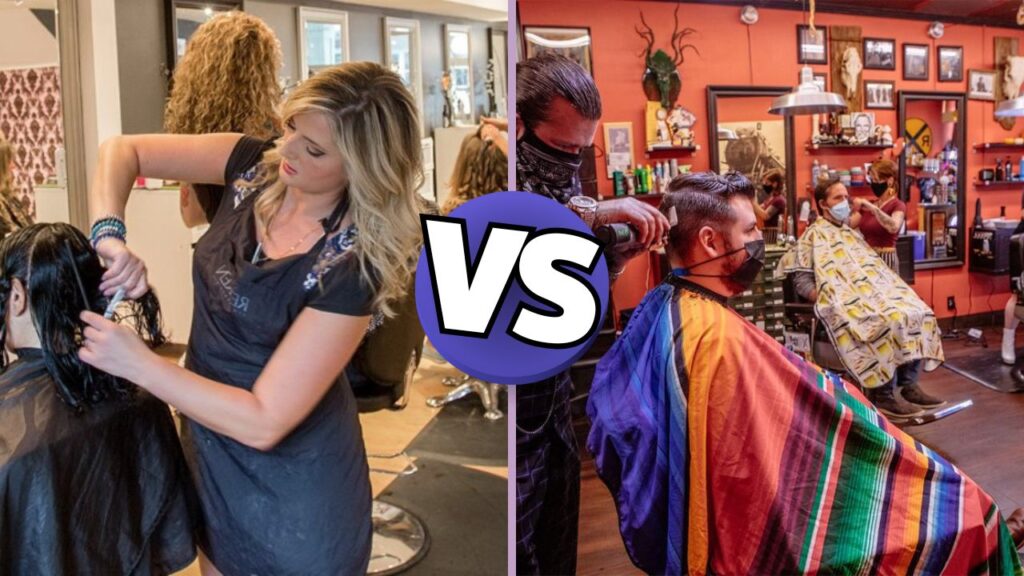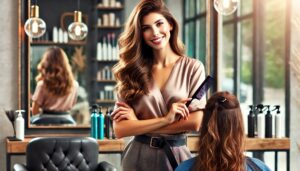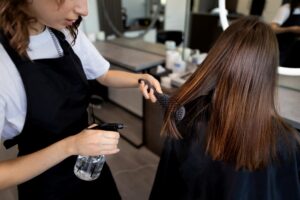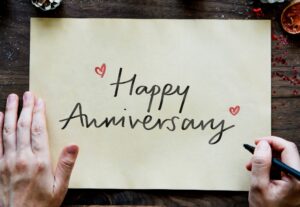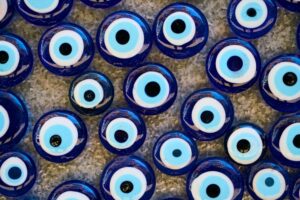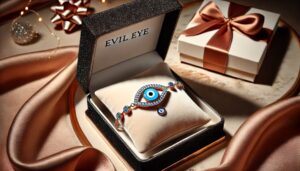Have you ever wondered about the distinction between a barber and a hairdresser? Many people use these terms interchangeably. However, understanding what is the difference between hairdressers and barbers is crucial for getting the haircut and style you truly desire. This article will explore the fascinating world of hair professionals. We will delve into their history, training, services, and the unique experiences they offer. By the end, you’ll confidently know whether to book an appointment with a barber or a hairdresser for your next grooming session.
A Cut Above: Tracing the Historical Roots of Barbers and Hairdressers
To truly grasp the difference between barbers and hairdressers, we need to take a step back in time. Both professions have rich histories, evolving from distinct roles with unique societal functions. Understanding these origins provides valuable context to their modern practices.
Barbers boast a history that stretches back millennia. Ancient civilizations like Egypt, Greece, and Rome had barbers. They were more than just hair cutters. In fact, barbers were integral members of society. Their skills extended far beyond trimming hair and beards. Historically, barbers were also surgeons and dentists! They performed minor surgical procedures. Tooth extractions were also within their scope. Imagine your barber pulling teeth! This might seem unusual today, but it was the norm for centuries. The iconic barber pole, with its red and white stripes, is a visual reminder of this bloody past. Red symbolized bloodletting, a common practice performed by barber-surgeons. White represented bandages.
The role of the barber was deeply intertwined with men’s grooming. Barbershops became social hubs for men. They were places for conversation, news sharing, and community bonding, alongside grooming services. Think of classic images of men gathered in barbershops, discussing sports and politics while getting a shave and a haircut.
Hairdressing, as a distinct profession, emerged later, primarily catering to women’s hair. While barbers focused on men’s short haircuts and facial hair, hairdressers specialized in longer hairstyles, styling, and hair treatments. The rise of elaborate women’s hairstyles in the 17th and 18th centuries fueled the growth of hairdressing. Think of the extravagant wigs and complex updos of those eras. These styles required specialized skills different from traditional barbering.
Hairdressing also became closely linked with fashion and beauty trends. Hairdressers weren’t just cutting hair. They were styling, coloring, and creating looks that reflected the latest fashions. This connection to beauty and aesthetics remains a defining characteristic of hairdressing today.
Skills and Services: Decoding What Each Profession Offers
The services offered by barbers and hairdressers represent a key differentiator between these professions. While some overlap exists, their core skills and specialties remain distinct. Understanding these differences is crucial for choosing the right professional for your needs.
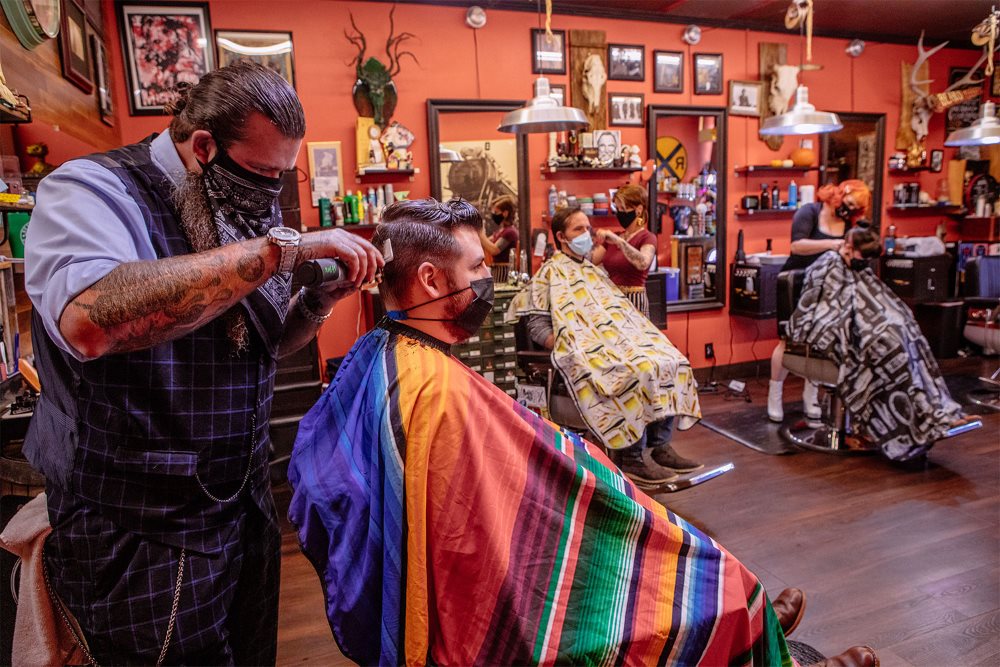
Barbers:
Traditionally, barbers specialize in cutting, shaping, and styling men’s hair. Their expertise lies in short haircuts, clipper work, and beard grooming. Think classic fades, buzz cuts, and tapers. Barbers are masters of using clippers and straight razors to achieve precise, masculine styles. They are also experts in facial hair grooming. This includes beard trimming, shaping, and traditional hot towel shaves. The experience in a barbershop often emphasizes classic men’s grooming rituals. Many barbershops offer a more traditional and masculine atmosphere, focusing on speed, efficiency, and classic styles.
Here’s a breakdown of typical barber services:
- Men’s Short Haircuts: Fades, crew cuts, buzz cuts, tapers, and classic scissor cuts for shorter styles.
- Clipper Expertise: Highly skilled in using clippers for various lengths and styles.
- Beard Trimming and Shaping: Maintaining and styling beards of all lengths and styles.
- Traditional Hot Towel Shaves: A signature barbershop experience, providing a close and relaxing shave with a straight razor.
- Scalp Treatments: Some barbers offer basic scalp treatments and massages.
Hairdressers:
Hairdressers, on the other hand, traditionally cater to a broader range of clients. They are skilled in cutting, styling, coloring, and treating all types of hair, often specializing in longer hairstyles and more complex techniques. Hairdressers work with scissors as their primary tool. They create layered cuts, long styles, and customized looks tailored to individual features and preferences. Coloring is a significant part of a hairdresser’s skillset. They are trained in various coloring techniques like highlights, balayage, ombre, and root touch-ups. Hairdressers also focus on hair health and texture. They offer treatments like deep conditioning, perms, relaxers, and keratin treatments. The salon experience with a hairdresser is often more focused on pampering and personalized styling. Salons typically offer a wider range of services and a more luxurious atmosphere.
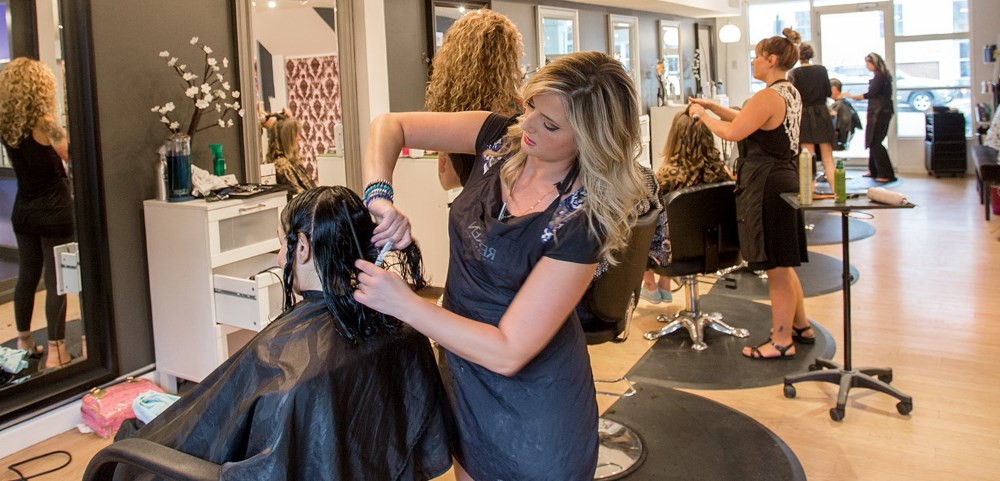
Here’s a breakdown of typical hairdresser services:
- Women’s and Men’s Haircuts: Skilled in cutting all hair lengths and styles, including long layers, bobs, and more intricate cuts.
- Scissor Mastery: Proficient in using scissors for detailed and customized haircuts.
- Hair Coloring and Highlighting: Expertise in a wide range of coloring techniques, from single process color to complex highlights and balayage.
- Styling and Updos: Creating hairstyles for special occasions, including updos, braids, and various styling techniques using heat tools and products.
- Chemical Treatments: Offering perms, relaxers, keratin treatments, and other chemical services to alter hair texture and manageability.
- Hair and Scalp Treatments: Providing deep conditioning treatments, scalp massages, and treatments for specific hair concerns like dryness or damage.
Training and Education: Paths to Professionalism
The training and education pathways for barbers and hairdressers also contribute to the differences in their skills and specialties. While both require formal training and licensing, the focus and curriculum may vary.
Barber Training:
Barber training programs typically emphasize clipper techniques, short haircuts, and facial hair grooming. These programs often have a strong focus on traditional barbering methods. This includes straight razor shaving and classic men’s hairstyles. The typical curriculum will then incorporate topics such as:
- Clipper Cutting Techniques: Extensive training in using clippers to create fades, tapers, and buzz cuts.
- Straight Razor Shaving: Mastering the art of traditional hot towel shaves and beard detailing with straight razors.
- Men’s Hair Styling: Learning to style and finish short men’s haircuts using pomades, waxes, and other styling products.
- Anatomy and Physiology of the Scalp and Hair: Understanding hair growth, scalp conditions, and basic hair science.
- Sanitation and Hygiene: Strict training in maintaining a clean and hygienic workspace, crucial for services like shaving.
- State Licensing Exams: Preparation for and passing state barber licensing exams, which often include practical and written components.
Hairdresser Training:
Hairdressing programs cover a broader spectrum of skills, encompassing cutting, coloring, styling, and chemical treatments for all hair types and lengths. Hairdressing schools emphasize scissor techniques, coloring theory, and a wider range of styling methods. The curriculum often includes:
- Scissor Cutting Techniques: Extensive training in using scissors for various haircuts, including layers, bobs, and long styles.
- Hair Coloring Theory and Application: In-depth study of hair color, color mixing, and various coloring techniques like highlights, balayage, and ombre.
- Chemical Treatments: Training in perms, relaxers, keratin treatments, and other chemical services, including safety procedures and application techniques.
- Hair Styling and Updos: Learning to create a wide range of hairstyles using heat tools, styling products, and techniques for special occasions and everyday looks.
- Hair and Scalp Treatments: Study of different hair and scalp conditions, and training in providing appropriate treatments and product recommendations.
- Anatomy and Physiology of Hair and Scalp: Comprehensive understanding of hair science, hair growth cycles, and scalp health.
- State Licensing Exams: Preparation for and passing state cosmetology or hairdressing licensing exams, which often include practical and written components.
While the core elements of sanitation, hair science, and licensing are shared, the emphasis on specific techniques and services differentiates barber and hairdresser training. Barber training is laser-focused on men’s short hair and traditional grooming, while hairdressing offers a broader, more versatile skill set catering to diverse hair types and styling needs.
Salon vs. Barbershop: Atmosphere and Client Experience
The environment and atmosphere of a salon versus a barbershop also contribute to the overall difference in the client experience. These environments often reflect the traditional focus of each profession.
Barbershops:
Barbershops traditionally cultivate a more masculine and community-focused atmosphere. They often feature a classic, retro décor with leather chairs, wood accents, and sports memorabilia. The barbershop is often a social hub, a place for men to relax, chat, and connect with their community. Conversation is often lively and informal, fostering a sense of camaraderie. The service in a barbershop is typically efficient and focused. The emphasis is on getting a great haircut or shave in a timely manner. Appointments are often less formal, and walk-ins are common. Barbershops generally cater primarily to men. The services and atmosphere are geared towards a male clientele.
Hair Salons:
Hair salons often aim for a more sophisticated, relaxing, and beauty-focused atmosphere. The décor can vary widely but often leans towards modern, stylish, and aesthetically pleasing designs. Salons emphasize a pampering and personalized experience. The focus is on relaxation and feeling taken care of. Services are often more elaborate and may include extras like scalp massages and beverage service. Appointments are usually necessary, and the experience is designed to be more personalized and attentive. Hair salons cater to a broader clientele, including women, men, and children. The services and atmosphere are designed to appeal to a diverse range of clients seeking various hair and beauty treatments.
While these are general trends, modern barbershops and salons are evolving. Some barbershops are adopting more modern and diverse atmospheres, and some salons are incorporating traditional barbering services. However, the historical roots of each profession still influence the typical environment and client experience.
Tools and Products: The Arsenal of Each Professional
The tools and products used by barbers and hairdressers also reflect their specialized skills and service offerings. While some tools overlap, each profession has its signature implements.
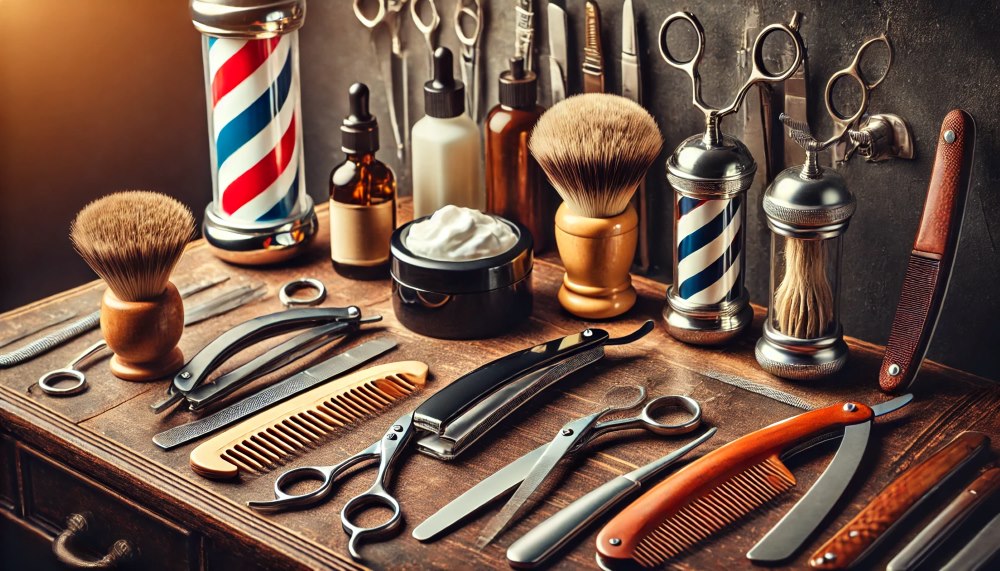
Barber Tools and Products:
Barbers are known for their mastery of clippers and straight razors. These tools are central to their signature services. Key barber tools and products include:
- Clippers: Essential for creating fades, buzz cuts, and short, precise haircuts. Barbers often use a variety of clippers with different guards and attachments.
- Straight Razors: Used for traditional hot towel shaves and precise beard detailing. Straight razors require skill and precision to use safely and effectively.
- Barber Shears (Scissors): Used for scissor-over-comb techniques and refining haircuts, but less central than clippers and straight razors.
- Neck Dusters: Used to remove loose hair after a haircut, a classic barbershop tool.
- Shaving Cream and Brushes: Used for traditional wet shaves, creating a rich lather for a smooth shave.
- Aftershave and Tonics: Products used to soothe and refresh the skin after shaving, often with masculine scents.
- Styling Products for Men: Pomades, waxes, gels, and clays designed to style and hold men’s short haircuts.
Hairdresser Tools and Products:
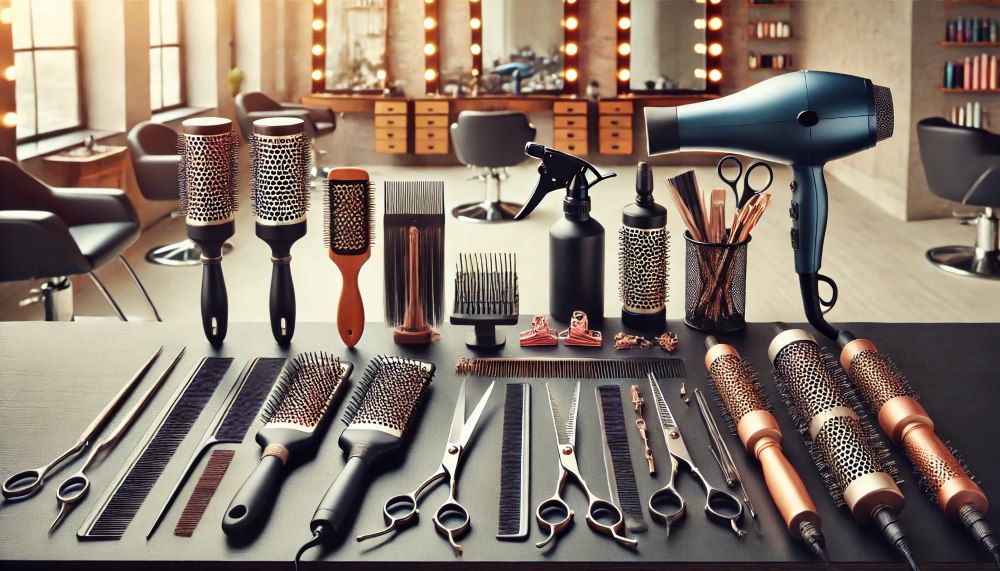
Hairdressers rely heavily on scissors, coloring products, and styling tools to create a wide range of looks. Key hairdresser tools and products include:
- Hairdressing Shears (Scissors): Essential for creating layered haircuts, bobs, and long styles. Hairdressers often use a variety of scissors, including blending shears and texturizing shears.
- Coloring Products: A vast array of hair dyes, lighteners, developers, and toners for creating single process color, highlights, balayage, and other coloring techniques.
- Brushes and Combs: A wide variety of brushes and combs for styling, detangling, and sectioning hair.
- Hair Dryers and Styling Irons: Essential for creating volume, curls, and smooth, straight styles. Hairdressers use various types of hair dryers and styling irons, including curling irons, flat irons, and wavers.
- Hair Styling Products: Mousses, hairsprays, serums, oils, and heat protectants for styling, finishing, and protecting hair from heat damage.
- Chemical Treatment Products: Perm solutions, relaxers, keratin treatments, and deep conditioning treatments, requiring specialized knowledge and application techniques.
While some overlap exists – both use scissors and styling products – the core tools reflect the specialized skills of each profession. Barbers prioritize clippers and razors for short, masculine styles, while hairdressers rely on scissors, coloring, and styling tools for a broader range of looks and services.
Modern Overlap and the Blurring Lines
In recent years, the lines between barbers and hairdressers have become increasingly blurred. Modern trends and evolving client demands have led to some overlap in services and blurring of traditional boundaries.
The Rise of the Unisex Salon and Modern Barbershop:
Unisex salons are becoming more common, offering services for both men and women under one roof. These salons often employ stylists who are skilled in both barbering and hairdressing techniques, offering a wider range of services to a diverse clientele. Modern barbershops are also evolving. Many contemporary barbershops are expanding their services beyond traditional men’s haircuts and shaves. They may offer longer scissor cuts, coloring services, and more sophisticated styling options. Some barbers are even incorporating elements of the salon experience, like offering scalp massages or more elaborate styling consultations.
Cross-Training and Dual Licensing:
Some professionals are choosing to pursue cross-training in both barbering and hairdressing. Dual licensing, holding both barber and cosmetology licenses, is becoming more common. This allows professionals to offer a wider range of services and cater to a broader clientele. The demand for versatility and adaptability in the hair industry is driving this trend towards cross-training and blurring the lines between the two professions.
Client Choice and Personal Preference:
Ultimately, the choice between a barber and a hairdresser often comes down to personal preference and individual needs. Some clients prefer the traditional masculine atmosphere of a barbershop and the expertise of a barber in short haircuts and beard grooming. Others prefer the wider range of services and more pampering experience of a hair salon and the expertise of a hairdresser in coloring, styling, and longer haircuts. Many clients simply choose based on convenience, location, or personal recommendations, regardless of whether the professional is a barber or a hairdresser.
Choosing Between a Barber and a Hairdresser: Making the Right Decision
So, what is the difference between hairdressers and barbers when it comes to choosing the right professional for you? Consider these factors to make an informed decision:
- Desired Haircut and Style: For short, classic men’s haircuts, fades, and beard grooming, a barber is often the best choice. For longer haircuts, layers, coloring, styling, and chemical treatments, a hairdresser is generally more specialized.
- Hair Type and Texture: Barbers are highly skilled in working with men’s hair textures and short styles. Hairdressers are experienced in working with a wider variety of hair types and textures, including longer, finer, or chemically treated hair.
- Personal Preference and Atmosphere: Do you prefer the traditional masculine atmosphere of a barbershop or the more sophisticated and pampering experience of a salon? Consider the environment where you feel most comfortable and relaxed.
- Service Range and Needs: Are you looking for a basic haircut, or do you need more comprehensive services like coloring, styling, or chemical treatments? Choose a professional whose service range aligns with your needs.
- Budget and Convenience: Barbershop services are sometimes more budget-friendly, particularly for basic haircuts. Consider your budget and the convenience of location and appointment availability when making your choice.
In Conclusion:
Understanding what is the difference between hairdressers and barbers is about recognizing their historical roots, specialized skills, service offerings, training, and the unique experiences they provide. While the lines are blurring in the modern hair industry, the core distinctions remain valuable for clients seeking specific grooming services. Whether you opt for the classic precision of a barber or the versatile artistry of a hairdresser, knowing the difference empowers you to choose the right hair expert for your individual style, needs, and preferences. Ultimately, the best choice is the professional who can deliver the haircut and experience that leaves you feeling confident and looking your best.
